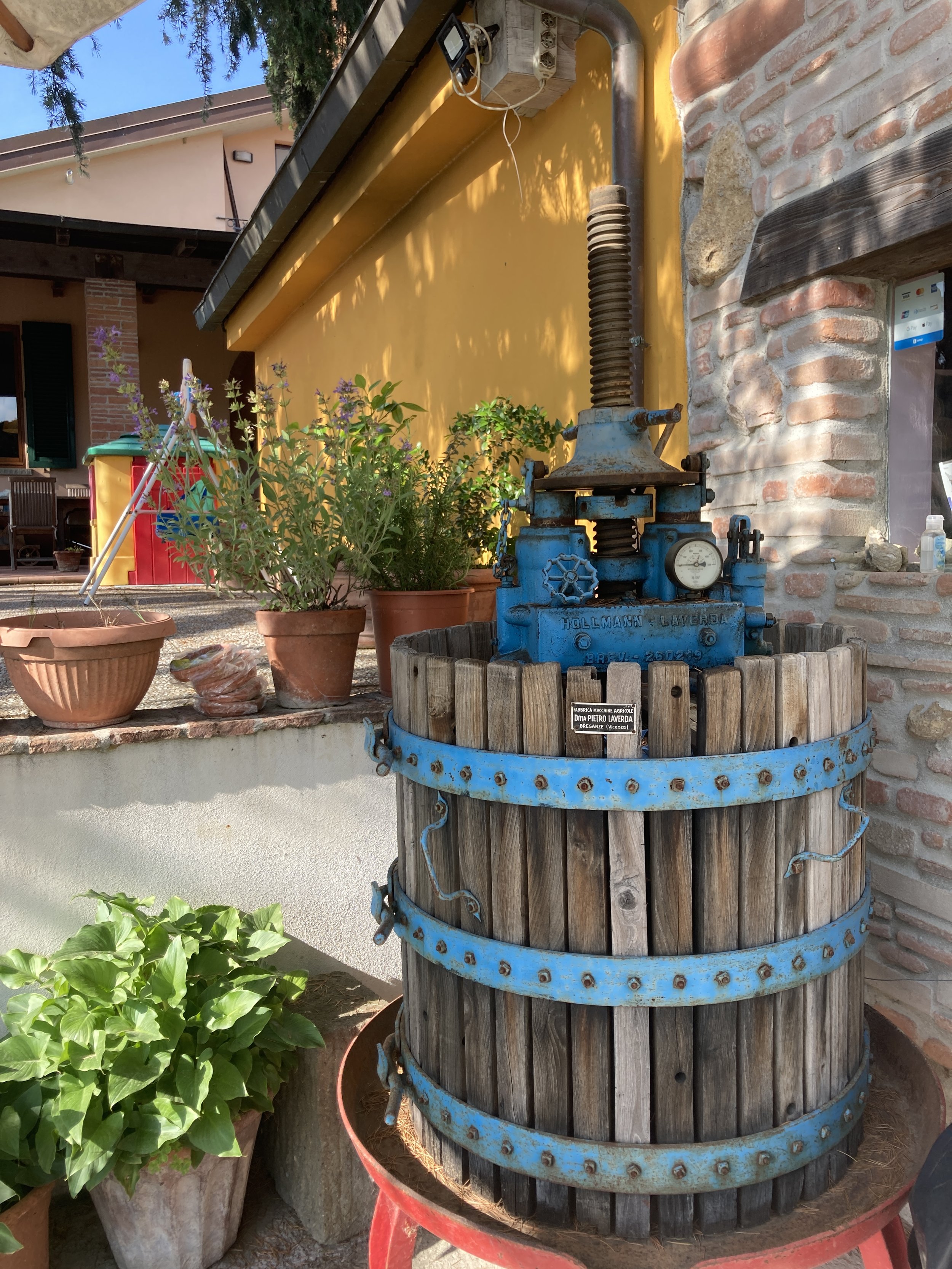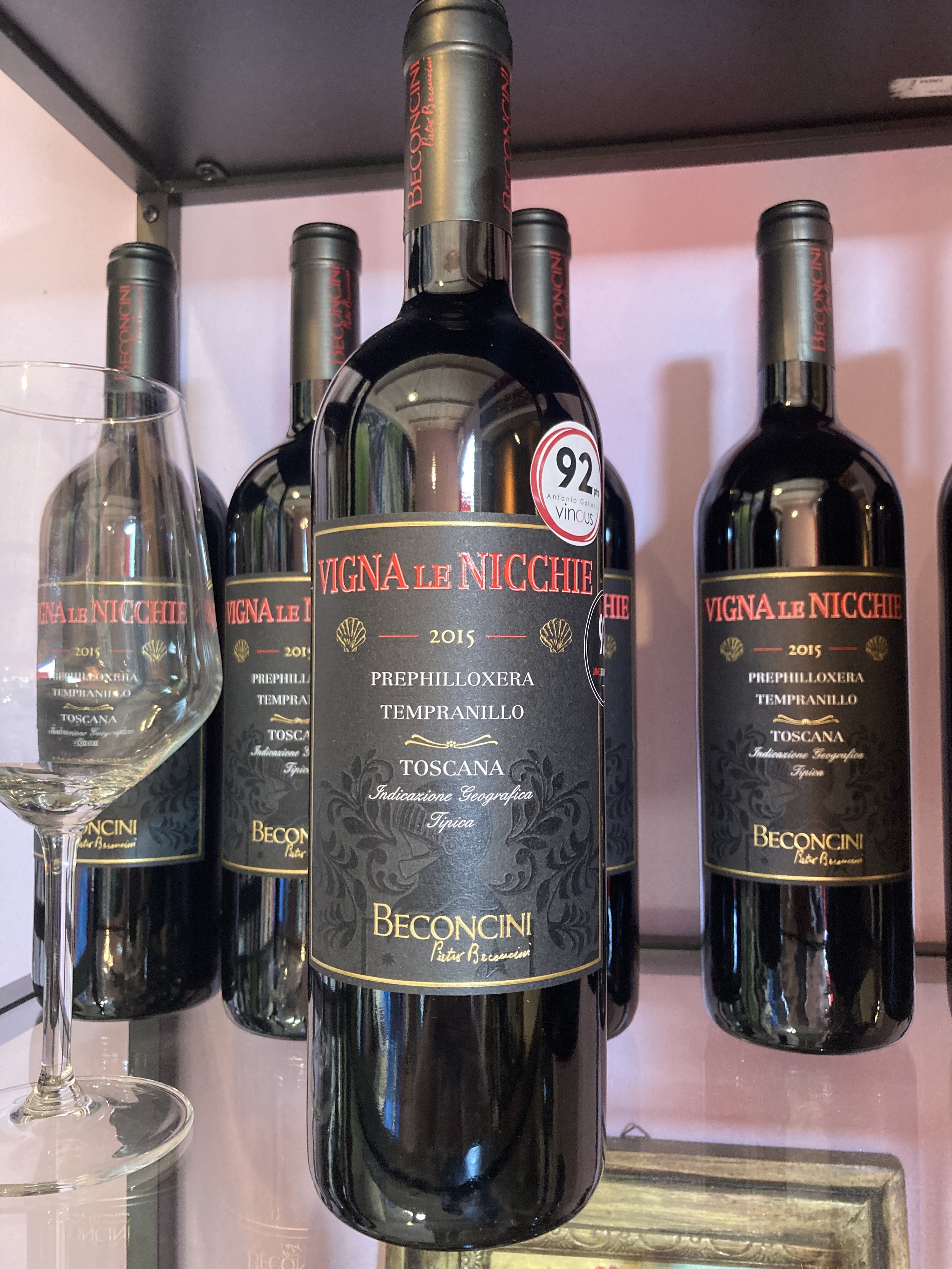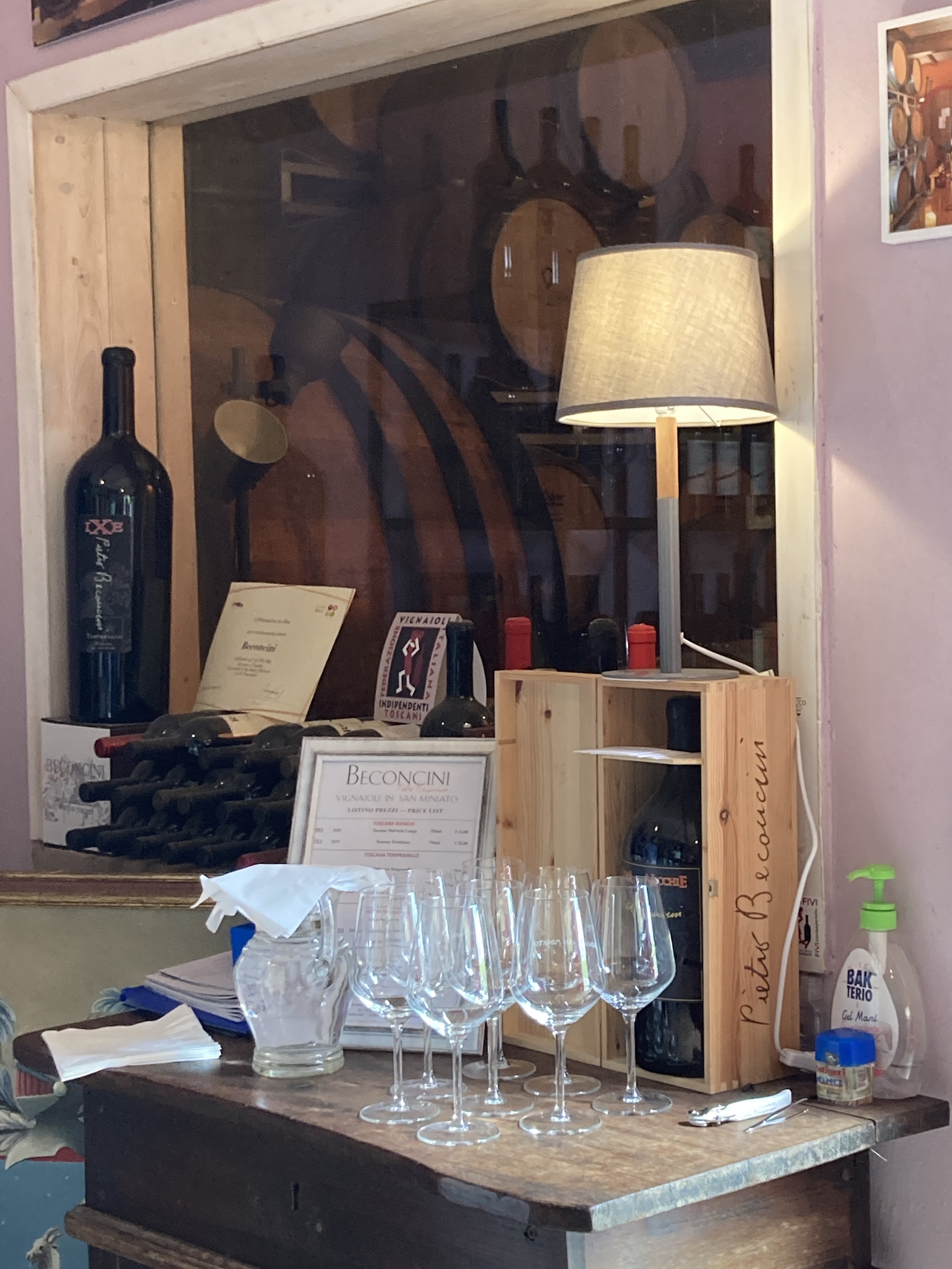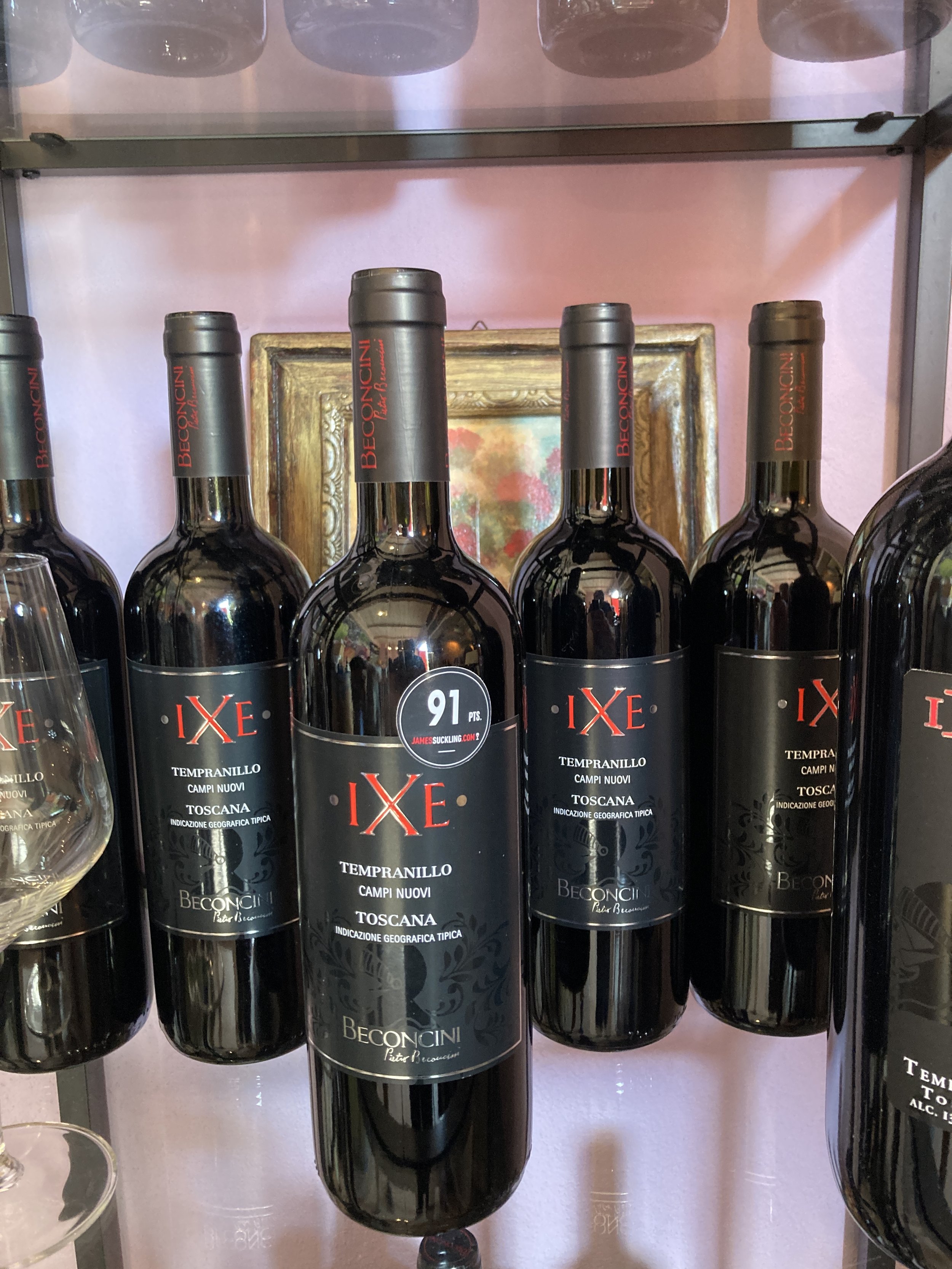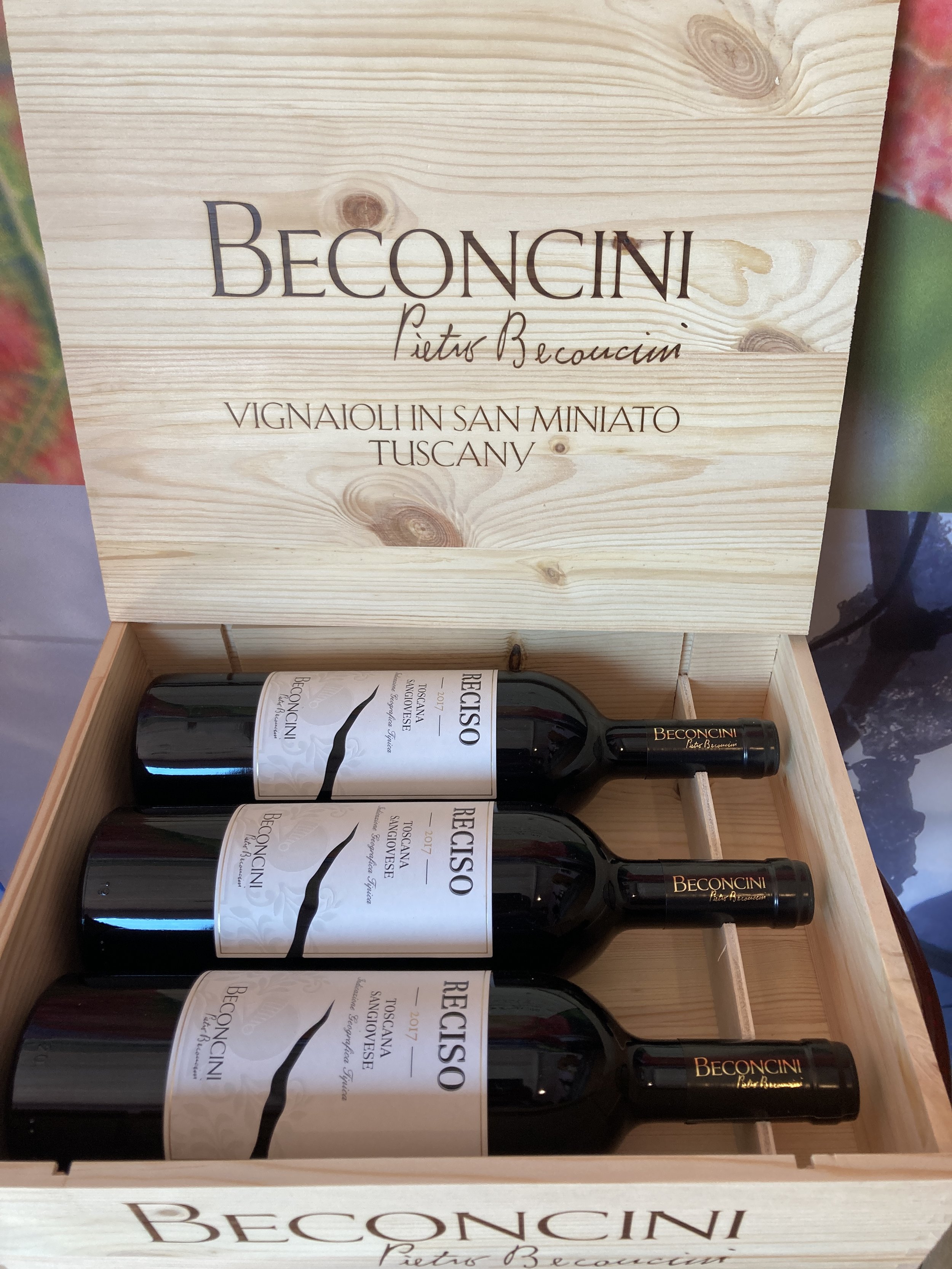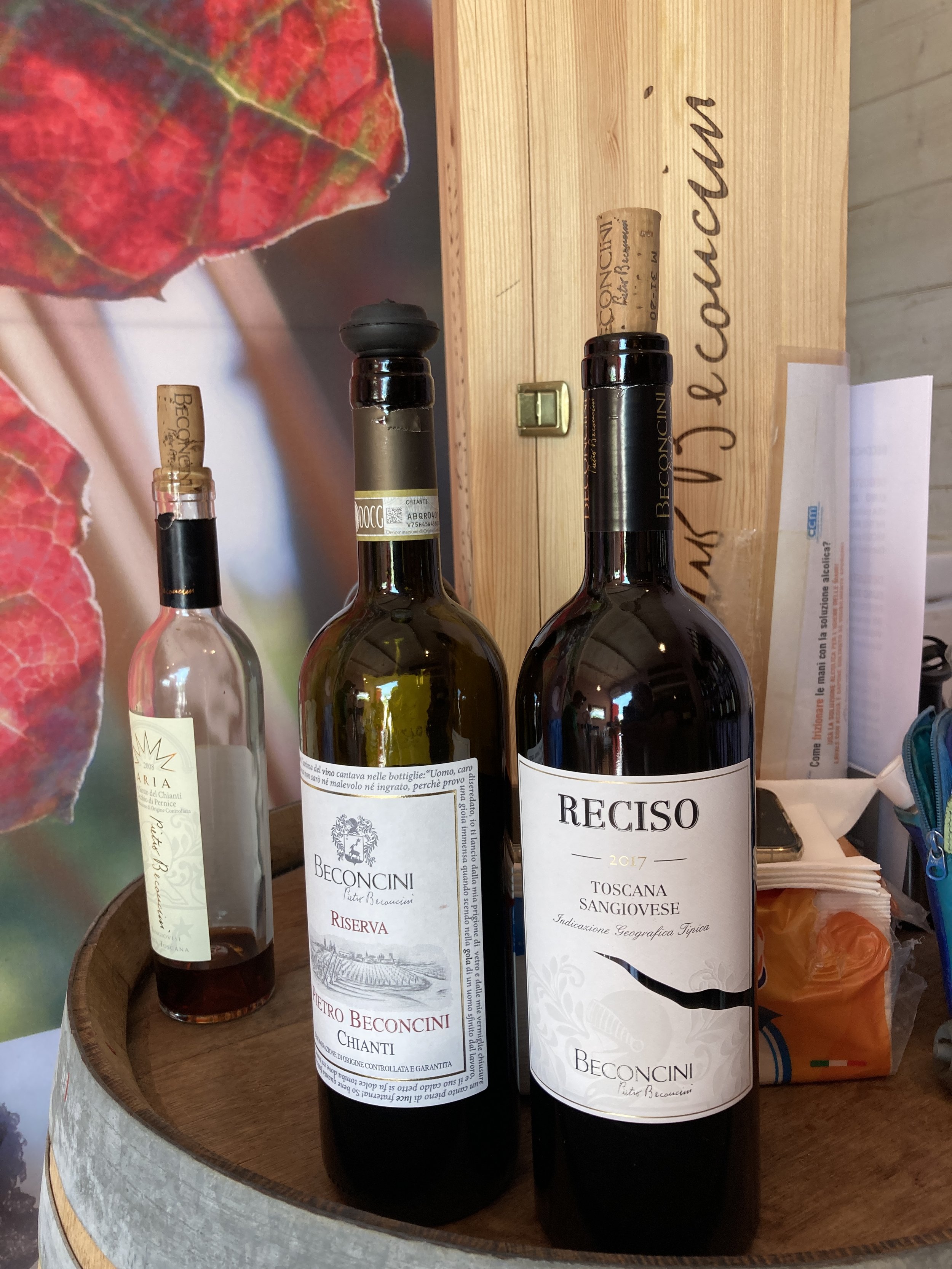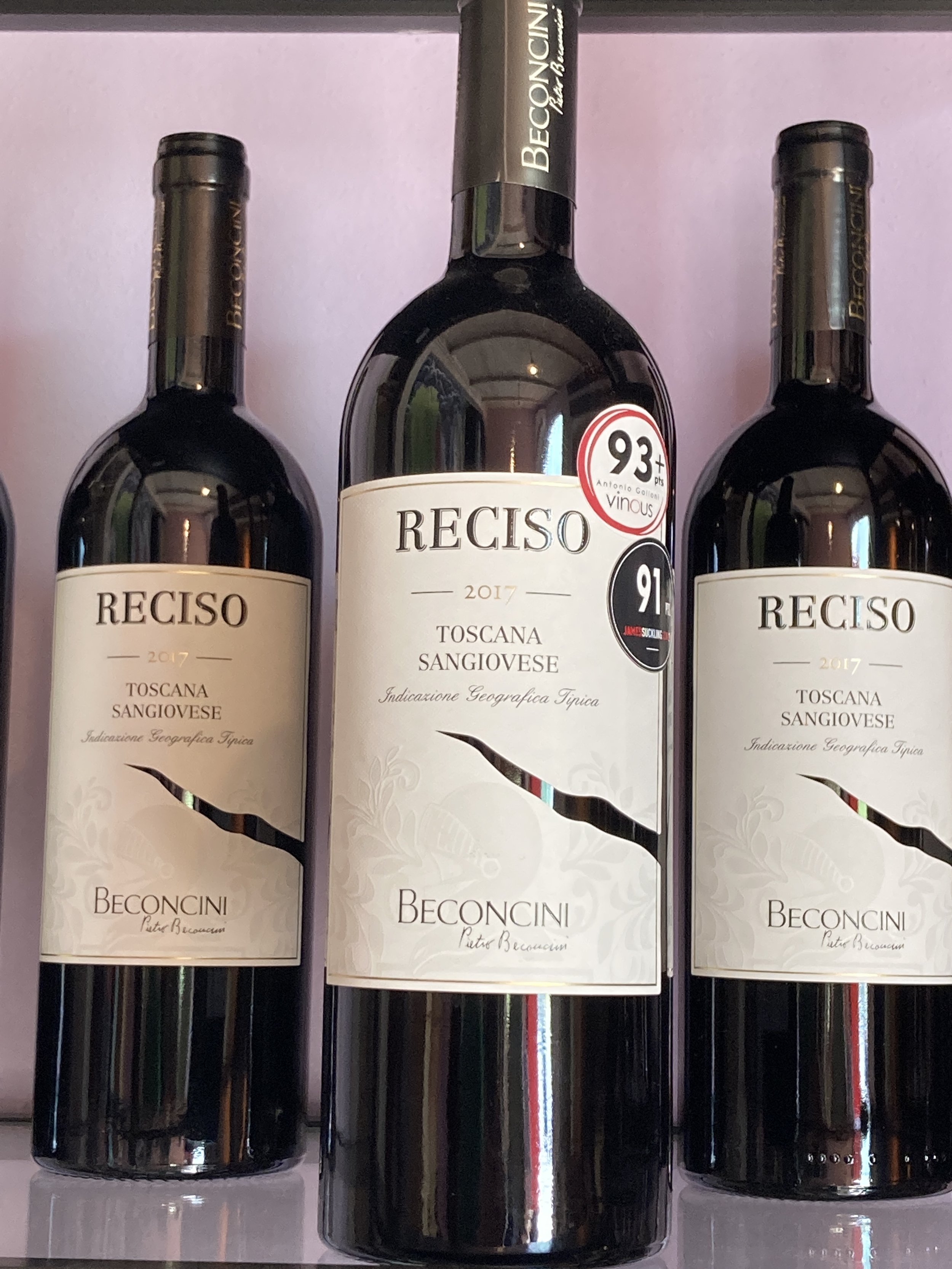A Tuscan Grape Mystery
4 generations ago, around the year 1950, Pietro Beconcini began to work land he had purchased near the city of San Miniato in Tuscany. His land was located along the ancient Via Francigena, the route pilgrims, from England, France, and Spain traveled to reach Rome. The importance of these passing pilgrims was likely not known to Beconcini at the time, but 4 generations later this has proved to be an important and most interesting fact. It has also contributed to a mystery.
The land Beconcini purchased was used to raise crops and animals. It also had some very old grape vines which were tended along with other crops.
Later generations of the family moved away from tending crops and instead turned their attention to those grapevines. Today the Pietro Beconcini Vineyard, now run by Leonardo Beconcini and Eva Bellagamba, produces several grape varieties and some very, very good wine.
Ah - but there is that mystery. A bit of a twist.
Some of those very old vines, at least 100 years old and perhaps as much as 900 years old, looked a bit strange. Unlike the other more typical vines of Sangiovese grapes grown throughout Tuscany, this vine was a mystery. They called the vines “X” for unknown.
Fast forward to modern viticulture and the ability to identify the genetic origins of grapes. It turns out these grape vines are actually Tempranillo. Tempranillo? Isn’t that a Spanish grape?
Let’s back up to those pilgrims walking the Via Francigena. Many came through Spain along the Santiago di Compostola. Those pilgrims likely carried grape seeds (not cuttings which would have been too hard to transport) some of which ended up in this very vineyard. The exact way that happened is unknown. Did clerics tending vineyards in the area plant them? Were they used in trade? Did some unlucky pilgrim spill them? This remains a mystery. But the production in the modern day Beconcini vineyard is now 30% Tempranillo. The Tempranillo grapes have of course changed a bit over time due to evolution and the unique terroir of this region which is rich in fossils and minerals.
I visited the Agricola Pietro Beconcini last week, along with a group of friends, for an afternoon of wine tasting. Definitely a family operation, Leonardo and Eva welcomed us, provided some of the history I have recounted here, and poured some of their wines. We tasted 3 wines made from Tempranillo grapes - a rosé and two 100% Tempranillo wines, the iXe and the Vigna Le Nicchie. The later comes from the oldest vines, those very hardy 100+ year old ones, vines that survived phylloxera. The flavors are a bit different than a Spanish Tempranillo, both due to the terroir here and to the way in which they are produced (less time in wood barrels, beginning fermentation in cement vats). Not being anything close to a wine expert, I would find it hard to describe the difference - perhaps a bit lighter, less intense than a Spanish wine. Both were good, the Vigna Le Nicchie was outstanding. Picture me carting home a bottle and wishing I could carry a case.
We also tasted a wine that was a 50/50 Sangiovese Malvasia blend (Maurleo) and one that was 100% Sangiovese (Reciso). The Recisco is the winery’s signature Sangiovese wine, the one that best represents the vines and their methods of production. Both were wonderful and a significant number of bottles accompanied our group back to Lucca. With this much wine tasting we were quite happy that we had arranged a driver to transport us to and from the winery!
We arrived back to Lucca happy with our day of wine tasting and pleased to have learned about the mystery and delight of Tuscan Tempranillo. We are looking forward to the Tempranillo Festival in San Miniato which takes place the first weekend in September. Ci vediamo lì ! (see you there)
